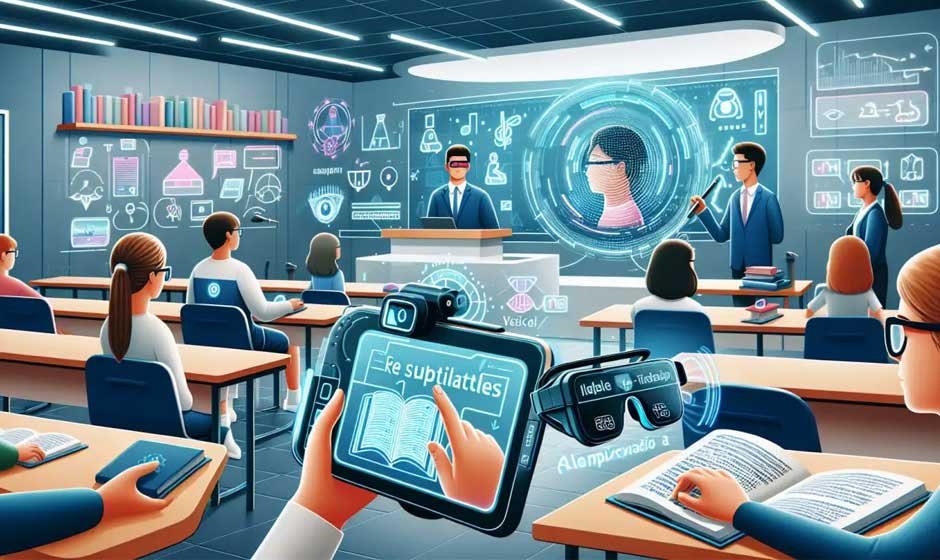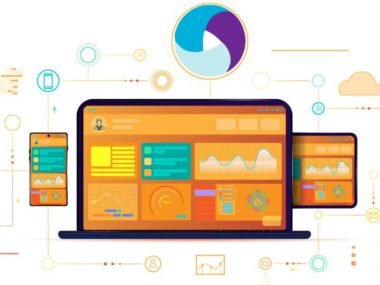From diagnosis of health complications to the shopping experience, everything once depended on humans; now, it’s AI that’s helping us. AI also touches on the education sphere, offering the possibility not only to enhance the whole learning process, but also to extend the ways of education out of the class. Teachers and students can also have AI help to fill the gaps and provide more unique solutions to plump up the learning.
Personalized Learning Paths
The ability to adapt knowledge to personal requirements is one of the most important additions to education because of AI. We know that AI systems can identify student’s capabilities or speed of learning and determine what is a good study plan for a student. For instance, Alayna AI Solutions has learning modules that guide students in directing their attention in areas that require improvement, becoming more efficient learners in that process.
Accessibility and Inclusion
The less privileged have the provision of education because of diverse backgrounds, especially those with disabilities. For students who have either hearing or visual impairment, special software applications like artificial intelligence speech-to-text programs and virtual personal assistants are usable. In addition, AI-generated translators will make it easier for students to have their required material translated into their preferred language.
Better Levels Of Education And Participation
Fetching others includes using AI to create other ways of learning frequently. Learners can start moving up their knowledge conveniently, leveraging new applications and technologies in artificial intelligence. Learning is made flexible, thus an important commodity in an ever-changing world of work throughout one’s life.
Enhanced Teacher Support
Teachers are a very important part of any learning process, but with a lot of work they have to do, they can hardly spend time with the students. That’s an effect of acting as a teacher. Coach for AI, teachers get support in such jobs as grading assignments and creating lesson plans. As tasks, we consider these to be the work of an intelligent academic agent, allowing teachers to develop more innovative ways of opening up new avenues for students’ active involvement in learning the materials with greater fun and having more meaningful exchanges with their charges.
Gamification of Learning
Game-based education simplifies learning, increases the learner’s interest, and improves learning. AI leads to rewards, challenges, and interactive activities in the learning process that make it fun and interesting. For example, an AI can be embedded into a math application that, for instance, decides the difficulty of the game by looking at a student’s performance to preserve the quality of challenges, as well as the level of interest.
Virtual Exercises and Real Case Studies
It offers the execution of a number of simulations and virtual labs for the experiential learning process. For example, students can test out ideas in an experiment or work through a case in an experiment environment free from any negative consequences. AI Facilities such as these are very suitable for those industries that need to practice, such as medicine, engineering, and management.
Bridging the Skills Gap
In particular, skills in a few industries are becoming more essential. AI solves the skills shortage by implementing skills and developing a plan. The use of such platforms provides an opportunity for learners to get tools that assist them in aligning with the current market, hence covering up the gap between employment and learning.
Process and Providing Constructive Criticism
These AI tools track learner progress and provide instant feedback so learners can continue to improve. Therefore, AI tests are not set, like most tests you carry out as you undergo learning processes, but they are changed to adjust to the performance of the learner. For example, Alayna AI watches your students’ activity and, based on the findings, informs you of areas to enhance or highlight and areas where you want your students to be in line with predetermined standards.
Conclusion
In conclusion, AI can provide student-centered education, anytime, anywhere education, and fun education. There are already such tools out there; Alayna AI is already assisting learners in learning beyond classrooms. AI will be a chief driver of learning and improvement for students, teachers, and generally anyone wanting to learn over time.










